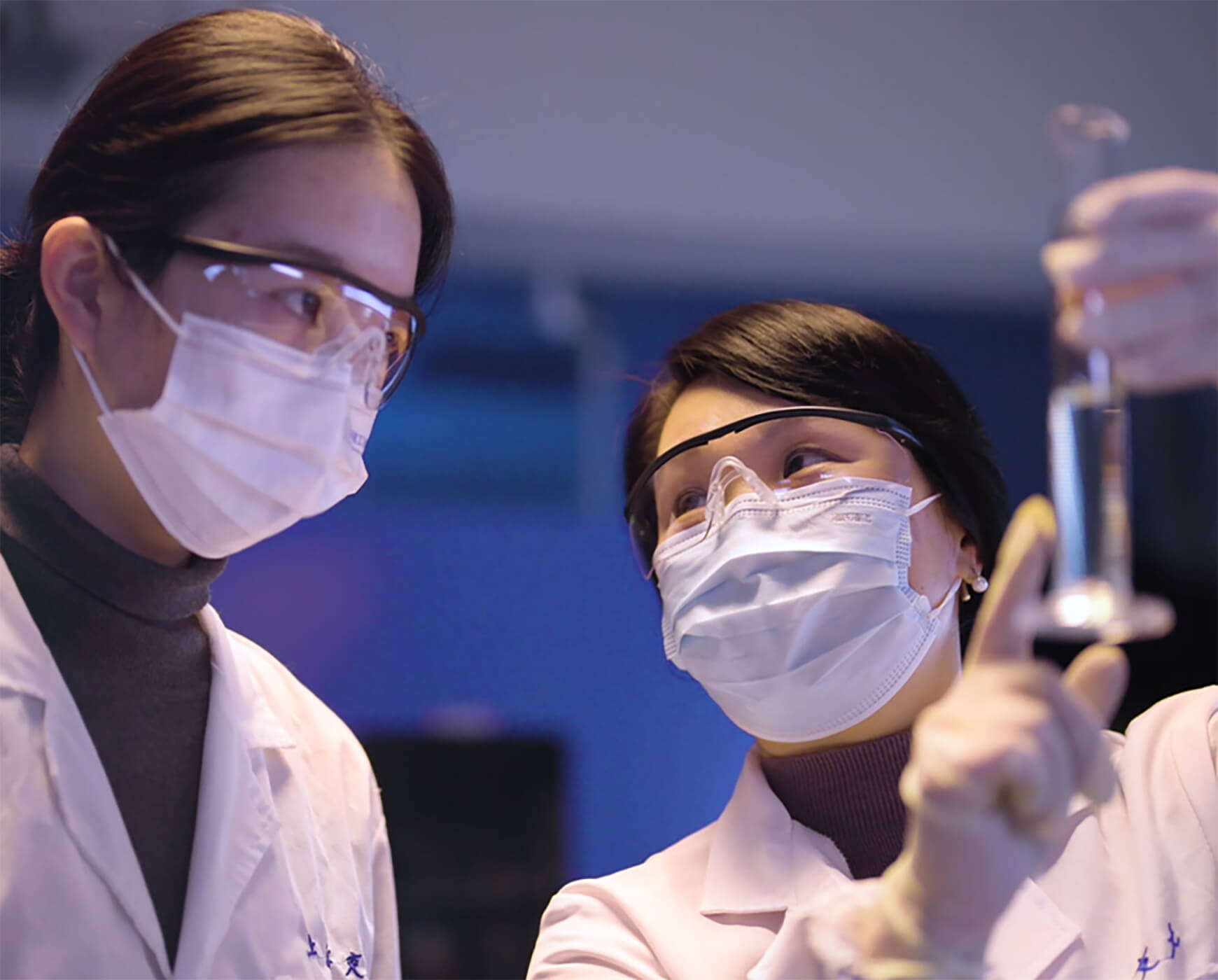
Recently, the PandaX experimental cooperation group led by Shanghai Jiao Tong University has made significant progress in the research on Majorana neutrinos in the Majorana neutrino experiment. The related achievements were published under the title "Searching for Two-Neutrino and Neutrinoless Double Beta Decay of Xe-134 with the PandaX-4T Experiment" in the journal "Physical Review Letters" (PRL), with Shanghai Jiao Tong University as the first affiliation unit. This is the first time that China has published leading experimental results in this field in PRL.
Associate Professor Wang Shaobo of the SPEIT and Professor Han Ke from the Department of Physics and Astronomy led the analysis. Yan Xiyu, a doctoral student at Sun Yat-sen University, is the first author of the paper, Professor Han Ke is the corresponding co-author of the paper, and Associate Professor Wang Shaobo is the corresponding co-author and contributor of the paper submission.
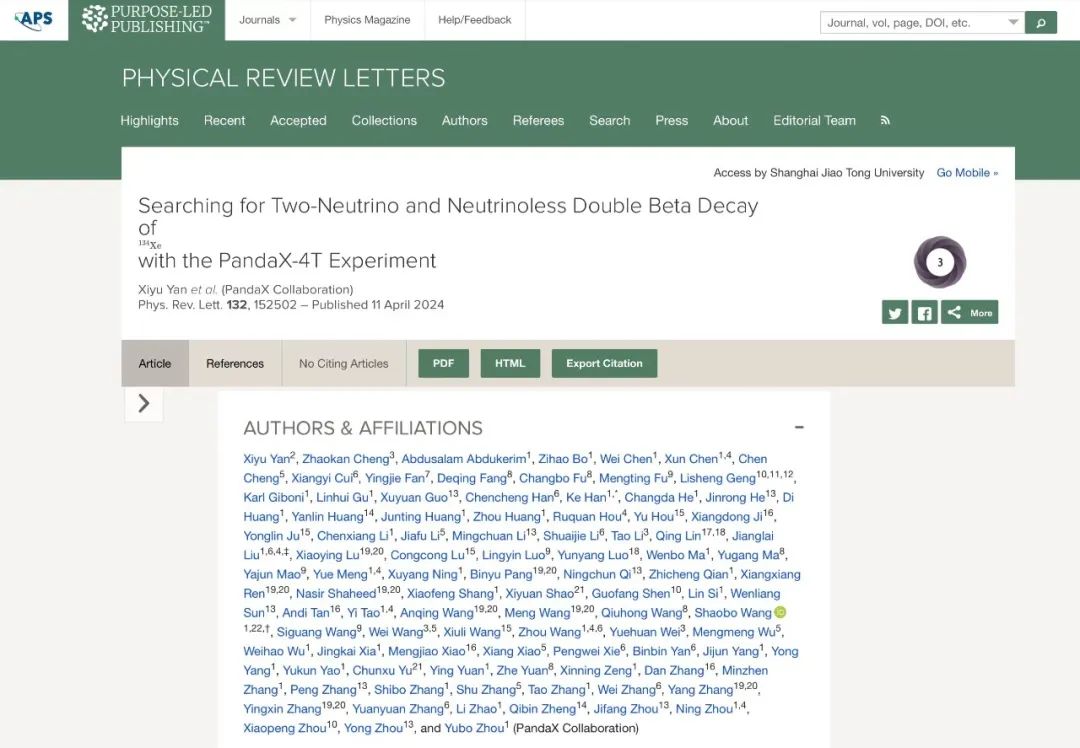
✦
Research background
✦
In 1937, Italian physicist Majorana proposed that the neutrino might be its own antiparticle, known as the Majorana neutrino theory. Two years later, American Furry proposed an experimental method to verify this theory: some atomic nuclei undergo a rare double beta decay (where two neutrons decay simultaneously). If this process does not emit a neutrino, it would prove the existence of Majorana neutrinos. Majorana neutrinos are crucial for addressing major questions such as lepton number conservation and the origin of matter-antimatter asymmetry in the universe. At the PandaX-4T experiment at the Jinping B2 Underground Laboratory in China, research on neutrinoless double beta decay of Xe-134 and Xe-136 provides a unique platform and opportunity for such studies.
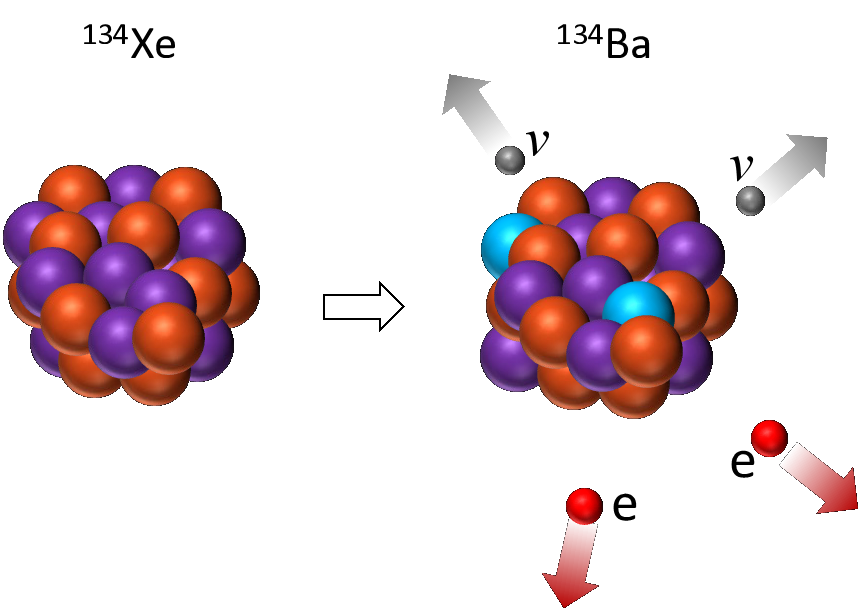
Diagram of Xe-134 double beta decay (image)
✦
Innovative results
✦
Xe-134 represents 10.4% of the abundance of natural xenon, and although the double beta decay of this nucleus is theoretically predicted, it had not yet been experimentally detected. The PandaX-4T experiment excels in searching for this Xe-134 decay. The detector contains four tons of natural xenon, approximately 400 kg of Xe-134 nuclei, with lower interference compared to international experiments like EXO and KamLAND-Zen which use enriched xenon-136. Additionally, the detector features advantages such as a low energy threshold and self-shielding.
Using the initial data from the PandaX-4T experiment, the cooperation group provided the strongest limits on the half-lives of Xe-134 double beta decay with neutrino and neutrinoless processes, namely greater than 2.8 × 10^22 years and 3.0 × 10^23 years (at 90% confidence), surpassing the previous international best levels by 32 times for neutrino double beta decay and 2.7 times for neutrinoless double beta decay. These results demonstrate the significant physical potential of the PandaX liquid xenon detector in neutrino physics.
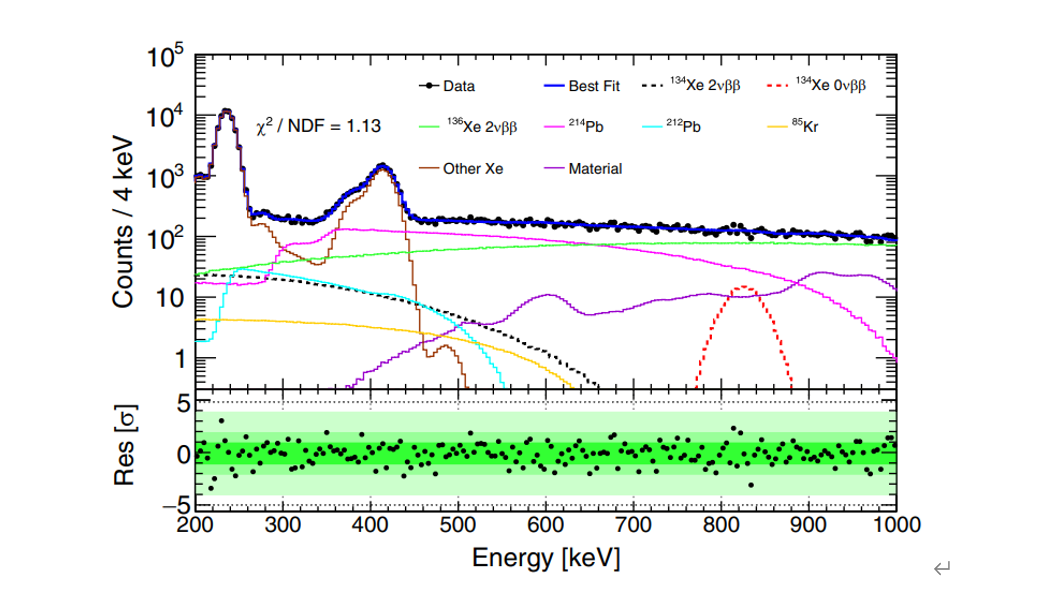
Energy spectrum fitting for Xe-134 neutrino and neutrinoless double beta decay searches, energy range from 200 to 1000 keV.
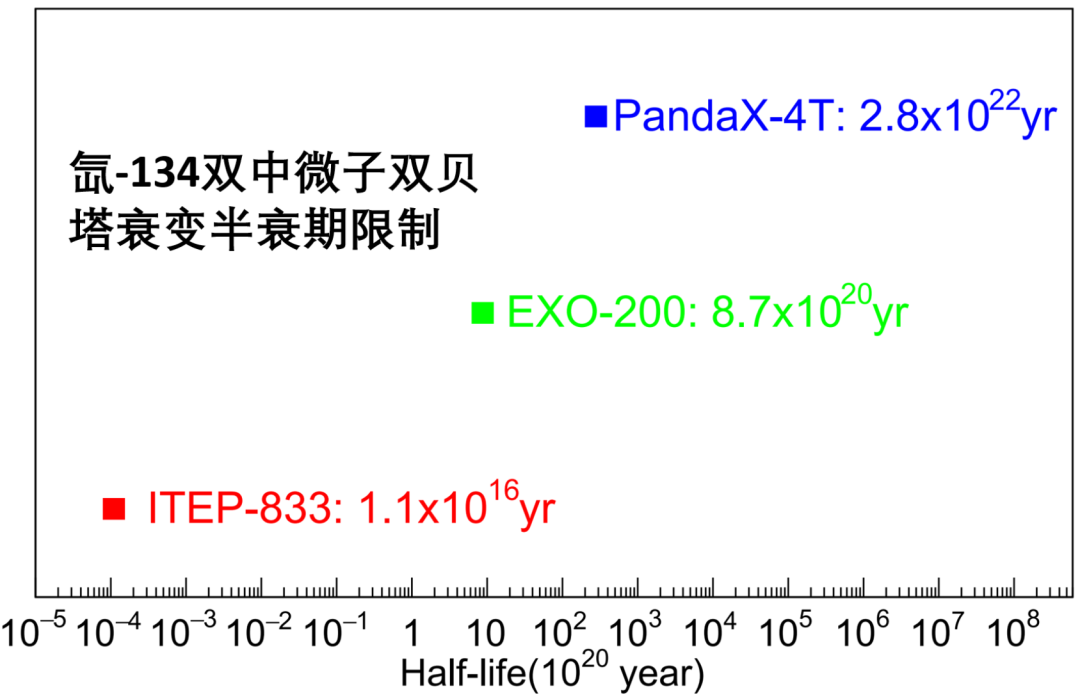
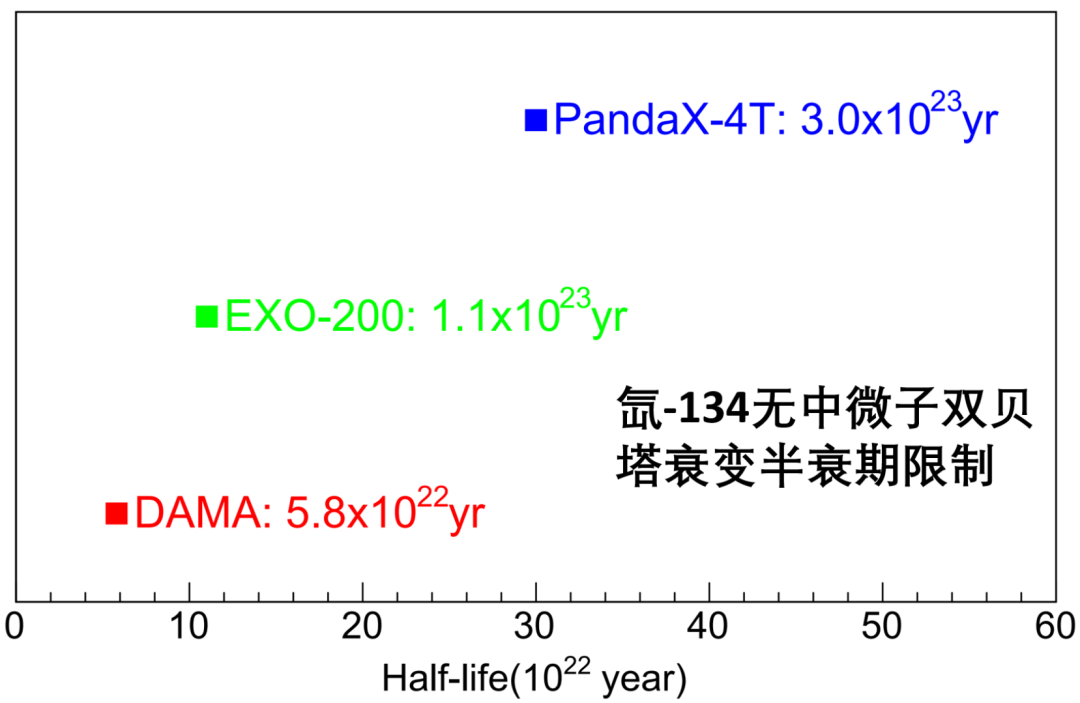
(Left image) Comparison of experimental results for Xe-134 neutrino double beta decay; (Right image) Comparison of experimental results for Xe-134 neutrinoless double beta decay.
✦
Research team
✦
The PandaX cooperation group was initiated and led by Shanghai Jiao Tong University, with Professor Liu Jianglai from the Lee Shau Kee Institute of Research and the Department of Physics and Astronomy as the current spokesperson. The cooperation partners of the PandaX experiment include Shandong University, Peking University, University of Science and Technology of China, Sun Yat-sen University, Beihang University, Nankai University, Fudan University, as well as the Yangtze River Basin Hydropower Development Company Ltd. This research work has received strong support from the Jinping Underground Laboratory, the Ministry of Education, Shanghai Jiao Tong University, as well as funding agencies such as the National Natural Science Foundation, the Ministry of Science and Technology, Shanghai Municipality, Sichuan Province, Hong Kong Hongwen Foundation, New Era Development Foundation, and Yangyang Development Fund.
Article link::
https://doi.org/10.1103/PhysRevLett.132.152502
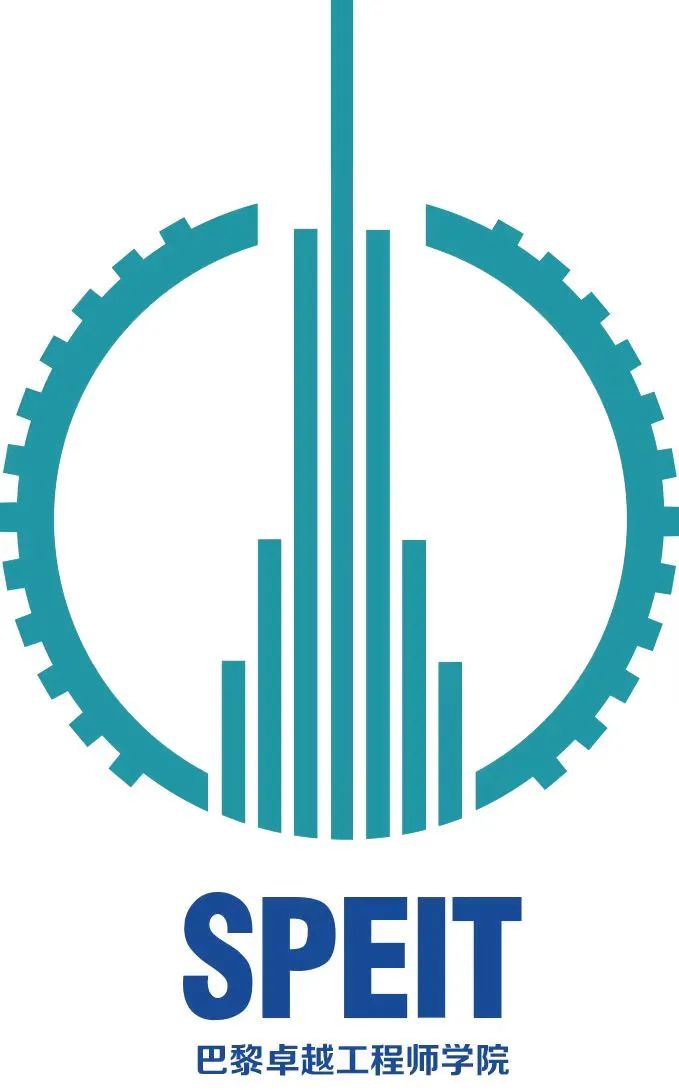

speit2013
http://speit.sjtu.edu.cn/


